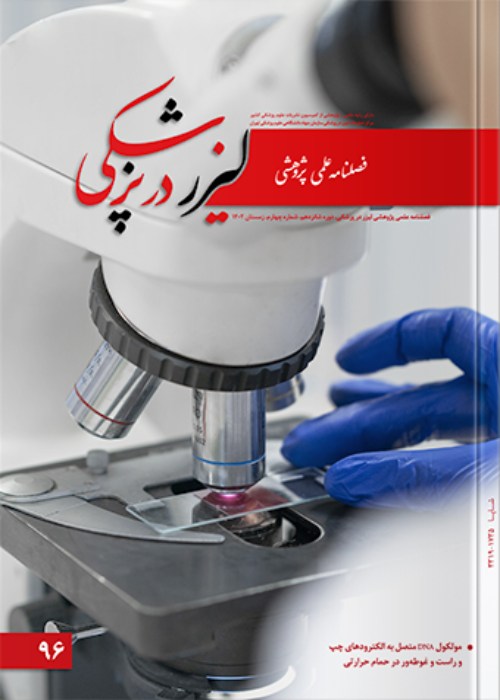The studying of second order electro-optical effects in CdTe quantum dots
Author(s):
Abstract:
Introduction
Over the past decade, applying quantum dot lasers have attracted increasing attentions. Because of high tenability and thus high flexibility of output power of such lasers, they have found numerous applications especially in the field of fine tissues surgery and tomography. Due to unique properties, quantum dots have better characteristics and even more privileged than common and quantum well lasers. In order to establish phase conjugation, Laser gain media, the main part of laser arrangement, have a non-zero value of nonlinear optical susceptibility. In the present study, we are trying to investigate the possibility of making variations in the mentioned property and hence tuning the output strengths of the produced laser. To conduct this, the use of fundamental theories of the principal optical transitions and combination with the concepts of quantum confinement, third order non-linear optical susceptibility of typical CdTe nanocrystallite for different parameters has been evaluated and also the related variations have been investigated. Material And Methods
In this study, excitonic effects on the third-order nonlinear optical properties in disk-like parabolic quantum dots are studied and the exciton oscillator strength and the third-order nonlinear optical susceptibility due to excitons in the parabolic quantum dots are analyzed theoretically. Finally, numerical results are presented for typical CdTe parabolic quantum dots. In order to access the related articles, some websites like Elsevier, IOP and American Physical Society (APS) have been searched.Results
The real and imaginary parts of third-order nonlinear optical susceptibility of nanostructured CdTe have been calculated and the dispersion diagram for excitation frequency of 5×1013Hz was plotted. Afterwards, the third-order nonlinear optical susceptibility was investigated for different photonic confinement frequencies. The position of exitonic resonance peak shifts right when the parabolic confinement frequency ω0 increases which predicts the blue-shift of strong induced confinement in semiconducting quantum dot.Conclusion
The results show that the third-order nonlinear optical susceptibility is greatly enhanced because the excitons are quantized enough in the quantum dots. This makes the parabolic quantum dots as a promising candidate for nonlinear optical applications specially in the semiconducting lasers with high tenability.Keywords:
Language:
Persian
Published:
Lasers in Medicine, Volume:7 Issue: 3, 2011
Page:
12
magiran.com/p912496
دانلود و مطالعه متن این مقاله با یکی از روشهای زیر امکان پذیر است:
اشتراک شخصی
با عضویت و پرداخت آنلاین حق اشتراک یکساله به مبلغ 1,390,000ريال میتوانید 70 عنوان مطلب دانلود کنید!
اشتراک سازمانی
به کتابخانه دانشگاه یا محل کار خود پیشنهاد کنید تا اشتراک سازمانی این پایگاه را برای دسترسی نامحدود همه کاربران به متن مطالب تهیه نمایند!
توجه!
- حق عضویت دریافتی صرف حمایت از نشریات عضو و نگهداری، تکمیل و توسعه مگیران میشود.
- پرداخت حق اشتراک و دانلود مقالات اجازه بازنشر آن در سایر رسانههای چاپی و دیجیتال را به کاربر نمیدهد.
In order to view content subscription is required
Personal subscription
Subscribe magiran.com for 70 € euros via PayPal and download 70 articles during a year.
Organization subscription
Please contact us to subscribe your university or library for unlimited access!


